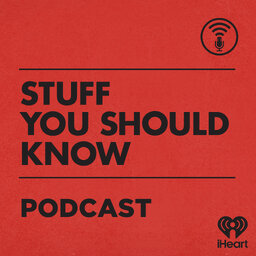SYSK Selects: How Bullfighting Works
When the Visigoths ruled Spain, they introduced the idea of battling bulls at festivals. Today matadors get paid $100,000 and perform in front of 50,000 fans. But is bullfighting an antiquated, abusive relic or a cultural tradition above reproach?
Learn more about your ad-choices at https://www.iheartpodcastnetwork.com
 Stuff You Should Know
Stuff You Should Know


